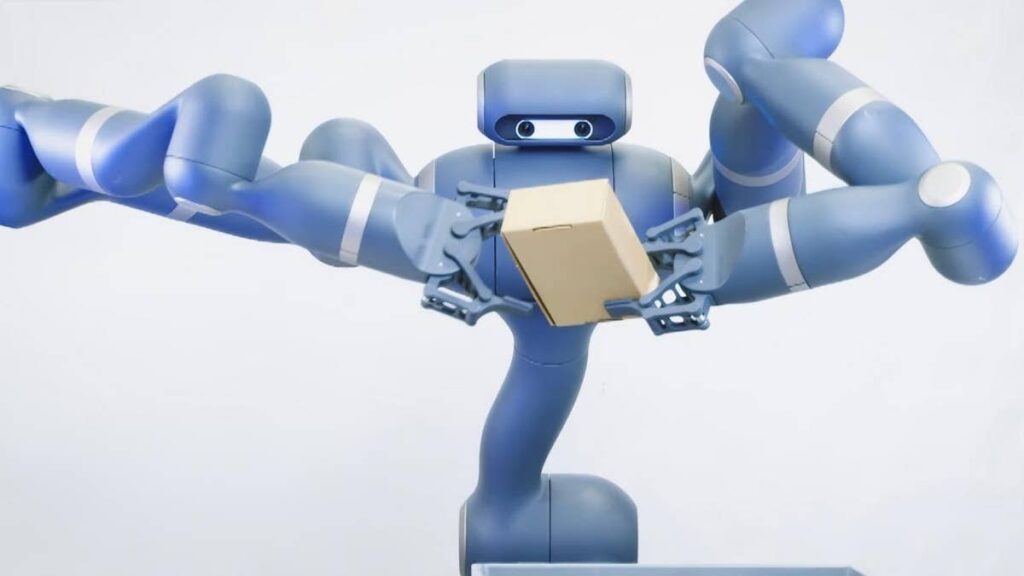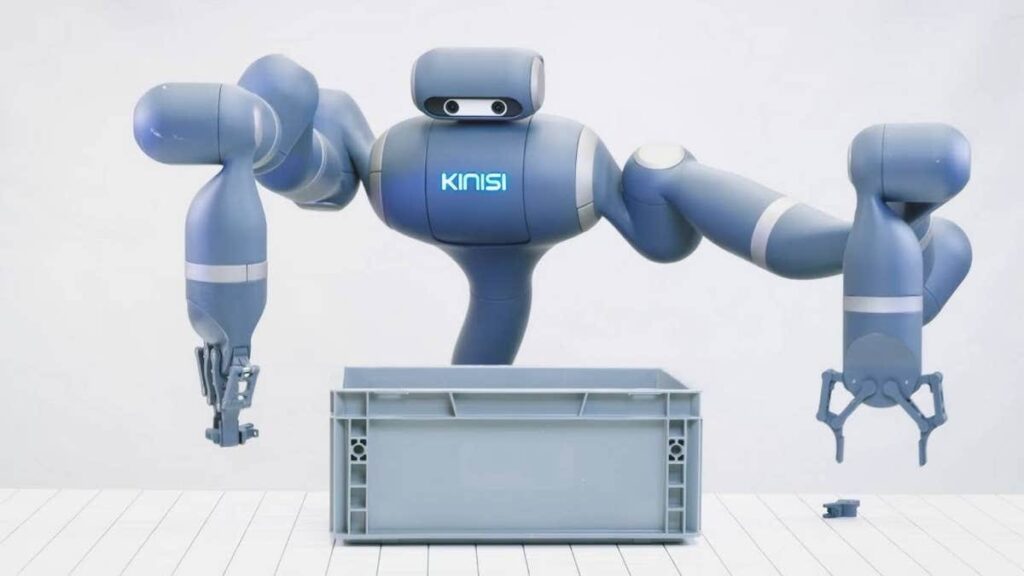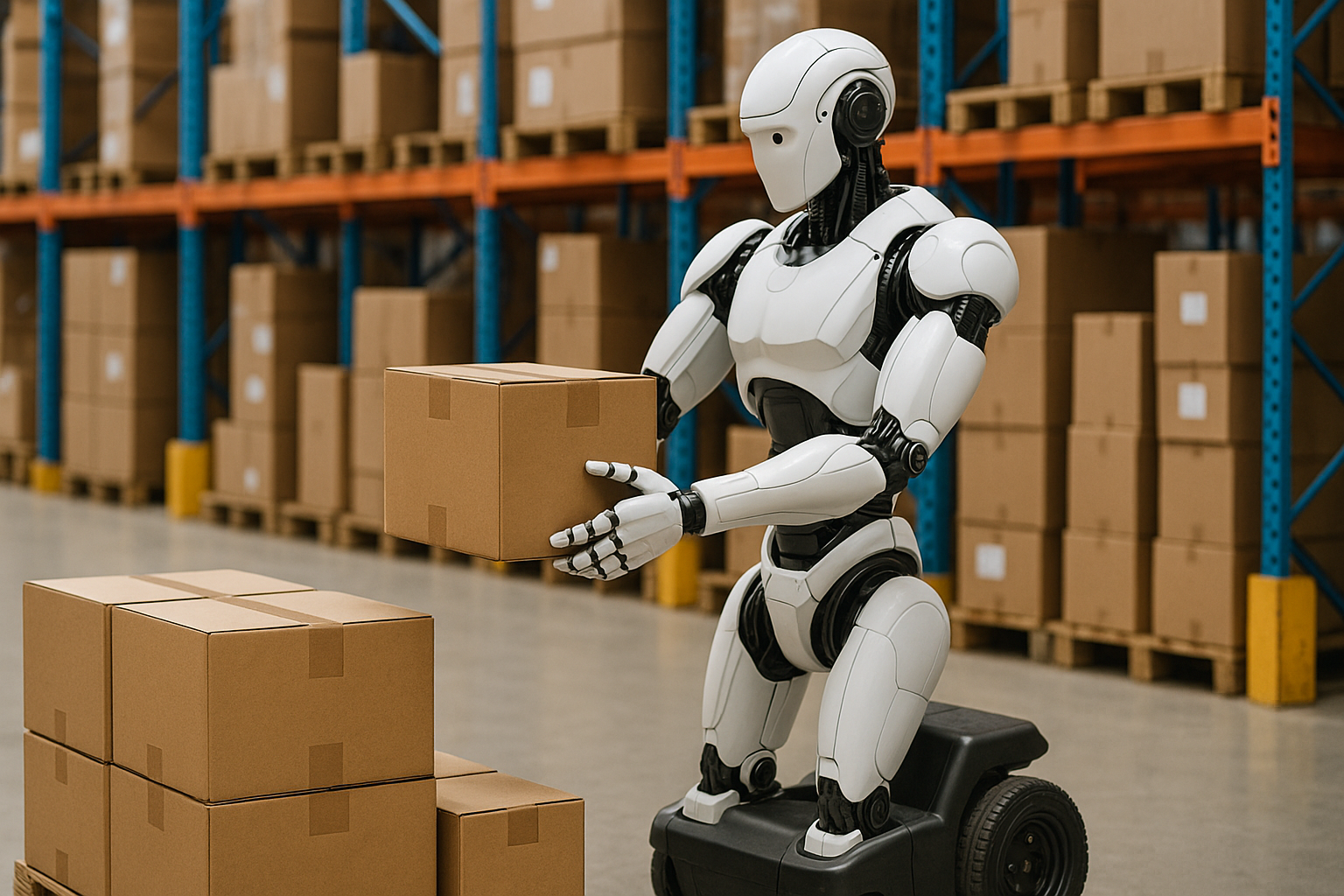In the age of lightning fast fulfillment and leaner operations, one revolution is quietly transforming the backbone of modern commerce warehouse robotics automation. Gone are the days when humans alone managed the chaos of inventory, packaging, and distribution.
Today, smart robots like Kinisi’s KR1 are redefining how goods move through warehouses with a blend of muscle, intelligence, and tireless efficiency. This isn’t just about replacing workers. It’s about empowering them and making warehouses smarter, safer, and infinitely more scalable.
The Rise of Warehouse Robotics Automation
The global demand for faster deliveries and seamless logistics has pressured warehouses to evolve. That’s where warehouse robotics automation steps in merging intelligent machines with real time decision making to reduce human error, speed up processes, and eliminate physical strain.
Kinisi’s KR1 robot, for instance, is engineered to operate in real world environments. With a wheeled base and two powerful arms, it’s capable of lifting items up to 22 pounds. It can maneuver through aisles, reach high shelves, and even handle fragile goods without breaking a sweat. Or more accurately without a single sick day.
Real World Performance: The KR1 Robot in Action
At a mid sized fulfillment center in Austin, Texas, the integration of Kinisi’s KR1 led to remarkable improvements, Labor fatigue reduced by 60%, Order fulfillment speed increased by 40%, Damaged goods during packaging dropped by 35%.
Warehouse supervisor Carla Nguyen shared, “We didn’t lose jobs we gained time. With KR1 handling the heavy lifting, my team could focus on accuracy and customer service. Productivity went up, and so did morale.”
Behind the Tech: What Makes KR1 Stand Out?
Unlike legged robots that consume more power and require complex calibration, KR1 operates on a smooth wheeled base. This allows it to move quickly and efficiently across standard warehouse floors.
Human Like Dexterity
With two robotic arms and hands, KR1 can perform tasks with precision. From loading heavy cartons to lifting delicate electronics, it adapts in real time using built in AI sensors.
Seamless Integration
KR1 supports plug and play compatibility with warehouse management systems (WMS). It doesn’t disrupt it enhances existing workflows, making it a true plug and perform solution.

Expert Opinions on Warehouse Robotics Automation
Dr. Elias Monroe, a robotics and AI consultant with over two decades of experience, remarked, “Warehouse robotics automation is not just about convenience. It’s about future proofing supply chains. Kinisi’s KR1 reflects a shift from experimental robotics to functional, reliable deployment. It’s the difference between innovation and impact.”
His assessment is echoed across the industry, as robotics is increasingly seen as a co-worker rather than a job thief.
A Human Centric Revolution: Worker Testimonies
One of the biggest misconceptions about warehouse robotics automation is that it devalues human labor. In reality, it removes the most physically dangerous or repetitive tasks so workers can focus on oversight, training, and strategic problem solving.
Ahmed Khan, a logistics floor manager in Dubai, shared, “Before the robot, we had 3 to 4 back injuries a year. Since KR1 came in, that’s dropped to zero. My team now competes for upskilling opportunities instead of avoiding heavy tasks.”
Such testimonials prove that automation, when implemented correctly, uplifts workers instead of sidelining them.
Benefits Beyond Labor Reduction
1. Lower Operational Costs
Yes, robots cost upfront but they pay back in months. Reduced injuries, faster throughput, and 24/7 operation mean more output at lower cost.
2. Enhanced Accuracy
Robots like KR1 reduce human error in order picking and packing, which leads to fewer returns and greater customer satisfaction.
3. Greater Resilience
During COVID-19, warehouses with robotics saw fewer shutdowns. KR1’s design with zero sick days and minimal maintenance makes businesses pandemic proof.
The Market Outlook: Why Automation is Just Beginning
MarketsandMarkets, the global warehouse robotics automation market is projected to grow from $4.7 billion in 2023 to over $9.2 billion by 2028. With rising e-commerce demand and labor shortages, this trend is not a blip it’s the new standard.
Small businesses are also adopting cost effective models like KR1, showing that robotics isn’t just for Amazon and Alibaba anymore. Scalable, intelligent robots are now within reach of midsize and even boutique operations.
Ethical Concerns and Responsibility
Of course, innovation comes with responsibility. Job displacement fears must be addressed with reskilling programs. Data privacy is crucial as more robots are equipped with visual and audio sensors. Safety regulations must evolve alongside technology to ensure ethical deployment.
Kinisi, for instance, enforces on device processing and avoids cloud recording to protect warehouse data.

The Smarter Way Forward
Warehouse floors are no longer chaotic, noisy places filled with manual strain. With innovations like Kinisi’s KR1, they are transforming into intelligent ecosystems where machines and humans work in harmony. This is the age of warehouse robotics automation not as a threat, but as a partner.
By blending human empathy with robotic efficiency, companies are rewriting the rules of labor. And the future? It’s already here, riding on wheels, lifting boxes, and never asking for a break.


1 thought on “Warehouse Robotics Automation: The Future of Smarter, Safer Industrial Work”